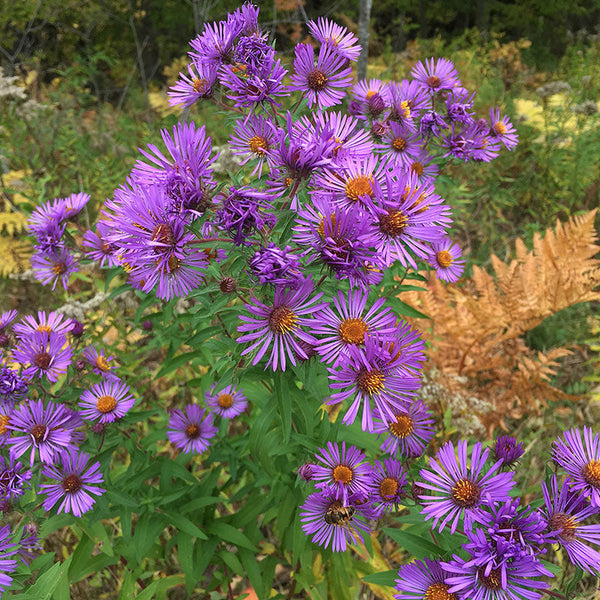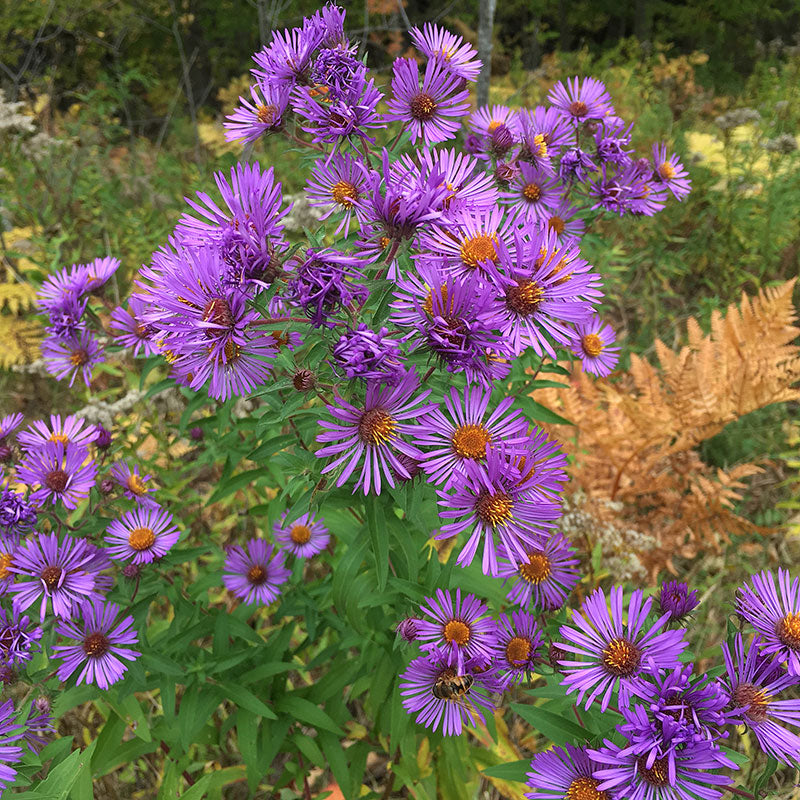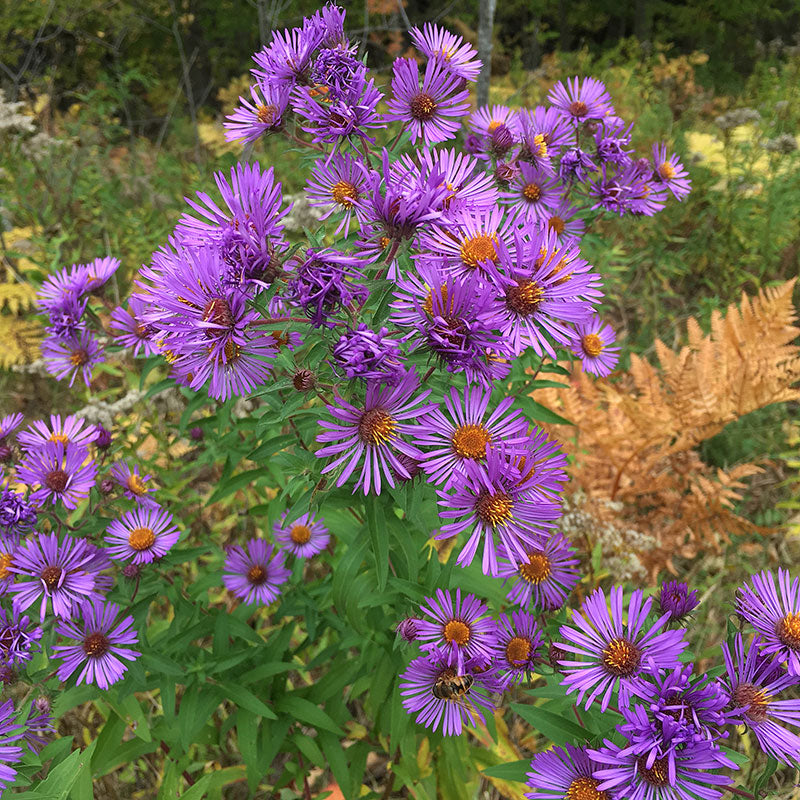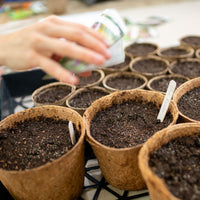SOWING INSTRUCTIONS
Depth:
Barely cover 1/16"
Starting Indoors:
Sow indoors 8 weeks before last frost or in spring. Keep at 65-75°F. A period of cold stratification may be beneficial to increase germination.
Starting Outdoors:
Sow in spring to early summer or winter sow into pots in the shade, covered with a thin layer of clean sand and a wire screen to keep out mice and voles. Check for moisture at regular intervals.
WHEN TO SET OUTSIDE
Plant out in springtime after all danger of frost has passed or in early autumn.
PLACEMENT & CULTIVATION
The New England Aster plays a vital role in our ecosystems; it is a larval host for checkerspot and pearl crescent butterflies and a nectar source for monarch butterflies and many species of bees. Somewhat unappealing to deer, unlike many other asters, and moderately drought tolerant. Pinch back a few times before mid-July to encourage bushiness and control height (keep in mind this will also delay flowering). Cut back after flowering if self-sowing is unwanted or if the plant foliage becomes unsightly, however, leaving the stalks provides nesting sites for native bees.
Watering Details:
Water regularly, about 1" a week, but do not overwater—they are also somewhat drought tolerant, but extremes will reduce blooms.
Soil pH:
This plant can grow in a variety pH levels, but prefers one which is slightly acidic.
Fertilizer:
Mix in 1" of compost in poor soils. Topdress with about a half inch of compost, repeating annually in early spring, or mix in an application of organic granular fertilizer.
Diseases & Pests:
Prevent powdery mildew by placing in full sun with plenty of airflow. Thin stems of established plantings to increase air circulation.
When to Cut for Bouquets:
Harvest when flowers are fully open.

































